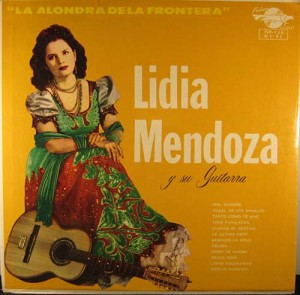Angelica Finds Meaning in Mariachi
Angelica Ocamp, an intern at the National Museum of American History (NMAH) whose internship just ended talks about her time with the Smithsonian.
My experience interning at the Smithsonian National American History museum has taught me that there is a place for my dreams. I have always been passionate about storytelling and I am particularly invested in making the narratives of marginalized communities visible.
It was a dream come true to be able to research stories and objects for the “Our American Journey” exhibit and to work alongside passionate like-minded people. I highly value the issues of diversity and representation so to work alongside the curators of “Our American Journey” who questioned these issues and showed concern on how to create an inclusive exhibit reaffirmed that I was working with amazing people. I definitely learned the importance of teamwork, research, time and dedication in creating a meaningful exhibit.
It was an honor for me to work with the Dr. Margaret- Salazar-Porzio, the curator of Latino History and Culture in the Home and Community Life division. She has inspired me to be a strong confident Latina woman and to keep pushing for my goals. Below is some information I compiled. I wrote that showcases my interests in highlighting stories that redefine mainstream narratives.
Latina Women Redefining Gender Roles Through Music
During March the Smithsonian celebrates Women’s History Month by featuring women’s stories and achievements with a series of films, lectures and performances across the National Mall Museums.
Over the years, the Smithsonian has worked to collect and highlight in exhibits powerful women who have challenged cultural stereotypes in the realms of politics, social change, media, and music. In particular, the Smithsonian has made incredible strides in expanding the knowledge of Latina contributions to the traditionally male-dominated musical traditions of the Corrido and Mariachi.
For example, “Corridos Sin Fronteras” (Ballads without Borders), a SITES traveling exhibit reveals the rich history of corridos in which women have played integral roles.
Corridos originated as U.S.-Mexico border folk music used to narrate historical and current events. Lydia Mendoza, a female Corridista is featured in this exhibit. She was known as the “Songstress of the Poor” who sang about heroes and unrequited love. Her recordings were influential and can be found in the Smithsonian Folklife Festival records.
Mariachi is another genre of folk music that originated in Guadalajara, in the State of Jalisco, Mexico. Mariachi is composed of a group consisting of anywhere between three to 20 or more musicians with a guitar, violin, coronet, trumpet and occasionally a harp. Mariachi reflects intense cultural mixing in the very instruments used as well as the kind of music performed—repertoires compromise a range of styles, ranging from the Mexican Bolero and ranchera to corridos and polkas.
Mariachi music became the national music of Mexico in the first half of the 20th century, right after the Mexican Revolution. Mariachi has since become an iconic symbol of Mexican culture around the globe and by the 1950s, Hollywood was using Mariachi music to signify ideas of what it meant to be Mexican, helping to popularize the genre. The music was quickly embraced by many Mexican-Americans as their own.
Mariachi is a celebration and groups commonly play at weddings, christenings, birthday parties, and are a popular entertainment in Mexican restaurants. Their distinctive musical sound and performance attire make them easy to spot. Mariachis wear distinctive charro and sombrero suits derived from the vaquero (cowboy) tradition. Women in Mariachi (charras) often wear a distinctive kind of charro costume, called the puebla or China Poblana. See here.
Mariachi and Corridos are often seen as only male-dominated genres but women have played very important roles in the development of the genres and throughout the United States, all female Mariachi ensembles continue to grow and flourish.
The Smithsonian Channel featured Mariachi “Mujer 2000”, a Los Angeles based all-female group. Lauro Sobrino, a Mariachi Violonist, musical director of “ Mujer 2000” and founder of The Mariachi Publishing Company that works to preserve and expand the history of women in Mariachi, was also named “Mariachi queen” in 1995 by the Los Angeles Times.
Women like Lydia Mendoza, Rosita Fernandez, Lauro Sobrina and the amazing performers in “Mujer 2000” are redefining the role of women in Mariachi and Corridos. Their success in breaking into a male dominated genre has paved the way for the growth of other women to continue to challenge and redefine gender norms.







